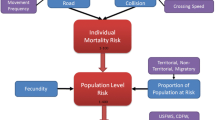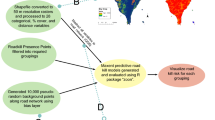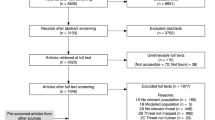Abstract
Ensuring the persistence of at-risk species depends on implementing conservation actions that ameliorate threats. We developed and implemented a method to quantify the relative importance of threats and to prioritize recovery actions based on their potential to affect risk to Mojave desert tortoises (Gopherus agassizii). We used assessments of threat importance and elasticities of demographic rates from population matrix models to estimate the relative contributions of threats to overall increase in risk to the population. We found that urbanization, human access, military operations, disease, and illegal use of off highway vehicles are the most serious threats to the desert tortoise range-wide. These results suggest that, overall, recovery actions that decrease habitat loss, predation, and crushing will be most effective for recovery; specifically, we found that habitat restoration, topic-specific environmental education, and land acquisition are most likely to result in the greatest decrease in risk to the desert tortoise across its range. In addition, we have developed an application that manages the conceptual model and all supporting information and calculates threat severity and potential effectiveness of recovery actions. Our analytical approach provides an objective process for quantifying threats, prioritizing recovery actions, and developing monitoring metrics for those actions for adaptive management of any at-risk species.







Similar content being viewed by others
References
Abbitt RJF, Scott JM (2001) Examining differences between recovered and declining endangered species. Conserv Biol 15:1274–1284
Aipanjigul S, Jacobson SK, Flamm R (2003) Conserving manatees: knowledge, attitudes, and intentions of boaters in Tampa Bay, Florida. Conserv Biol 17:1098–1105
Averill-Murray RC, Darst CR, Field KJ, Allison LJ (2012) A new approach to conservation of the Mojave desert tortoise. Bioscience 62:893–899
Balmford A, Carey P, Kapos V, Manica A, Rodrigues ASL, Sharlemann JPW, Green RE (2009) Capturing the many dimensions of threat: comment on Salafsky et al. Conserv Biol 23:482–487
Boarman WI (2002) Threats to desert tortoise populations: a critical review of the literature. US Geological Survey, Western Ecological Research Center, Sacramento. http://www.werc.usgs.gov/ProductDetails.aspx?ID=2574. Accessed Jan 2012
Boarman WI, Kristan WB (2006) Evaluation of evidence supporting the effectiveness of desert tortoise recovery actions: US geological survey scientific investigations report 2006–5143, 27 p. http://pubs.usgs.gov/sir/2006/5143/sir_2006-5143.pdf. Accessed Jan 2012
Bolten AB, Crowder LB, Dodd MG, MacPherson SL, Musick JA, Schroeder BA, Witherington BE, Long KJ, Snover ML (2011) Quantifying multiple threats to endangered species: an example from loggerhead sea turtles. Front Ecol Environ 9:295–301
Brooks ML (1998) Ecology of a biological invasion: alien annual plants in the Mojave desert. Ph.D. Dissertation, University of California, Riverside. 186 p
Brooks ML (2009) Spatial and temporal distribution of nonnative plants in upland areas of the Mojave desert. In: Webb RH, Fenstermaker LF, Heaton JS, Hughson DL, McDonald EV, Miller DM (eds) The Mojave desert: ecosystem processes and sustainability. University of Nevada Press, Reno, pp 101–124
Brooks ML, Esque TC (2002) Alien plants and fire in desert tortoise (Gopherus agassizii) habitat of the Mojave and Colorado deserts. Chelonian Conserv Biol 4:330–340
Brown DE, Minnich RA (1986) Fire and changes in creosote bush scrub of the western Sonoran desert, California. Am Midl Nat 116:411–422
Burgman MA, Ferson S, Akçakaya HR (1993) Risk assessment in conservation biology. Chapman and Hall, London
Clark JA, Hoekstra JM, Boersma PD, Kareiva P (2002) Improving U.S. endangered species act recovery plans: key findings and recommendations of the SCB recovery plan project. Conserv Biol 16:1510–1519
Conservation Management Partnership [CMP] (2003) The open standards for the practice of conservation. CMP, Washington, DC. http://www.conservationmeasures.org. Accessed Jan 2012
Cooper JC (1863) Description of Xerobates agassizii. Proc Calif Acad Sci 2:120–121
Doak D, Kareiva P, Klepetka B (1994) Modeling population viability for the desert tortoise in the western Mojave desert. Ecol Appl 4:446–460
Donlan CJ, Wingfield DK, Crowder LB, Wilcox C (2010) Using expert opinion surveys to rank threats to endangered species: a case study with sea turtles. Conserv Biol 24:1586–1595
Doremus H, Pagel JE (2001) Why listing may be forever: perspectives on delisting under the U.S. endangered species act. Conserv Biol 15:1258–1268
Efroymson R, Jager H, Dale V, Westervelt J (2009) A framework for developing management goals for species at risk with examples from military installation in the United States. Environ Manage 44:1163–1179
General Accounting Office [GAO] (2002) Endangered species: research strategy and long-term monitoring needed for the Mojave desert tortoise recovery program. GAO-03 23, Washington DC
Halpern BS, Selkoe KA, Micheli F, Kappel CV (2007) Evaluating and ranking the vulnerability of global marine ecosystems to anthropogenic threats. Conserv Biol 21:1301–1315
World Conservation Union [IUCN] (2005) Threats authority file. Version 2.1. IUCN Species Survival Commission, Cambridge, United Kingdom. http://www.iucn.org/about/work/programmes/species/red_list/resources/technical_documents/authority_files/. Accessed Jan 2012
Kiker GA, Bridges TS, Varghese A, Seager TP, Linkov L (2005) Application of multicriteria decision analysis in environmental decision making. Integr Environ Assess Manage 1:95–108
Lawler JJ, Campbell S, Guerry AD, Kolozsvary MB, O’Connor RJ, Seward L (2002) The scope and treatment of threats in endangered species recovery plans. Ecol Appl 12:663–667
Malczewski J (1999) GIS and multicriteria decision analysis. Wiley, New York, p 392
Margoluis R, Stem C, Salafsky N, Brown M (2009) Using conceptual models as a planning and evaluation tool in conservation. Eval Progr Plan 32:138–147
Martin TG, Burgman MA, Fidler F, Kuhnert PM, Low-Choy S, McBride M, Mengersen K (2012) Eliciting expert knowledge in conservation science. Conserv Biol 26:29–38
Medica PA, Bury RB, Turner FB (1975) Growth of the desert tortoise (Gopherus agassizii) in Nevada. Copeia 1975:639–643
Murphy RW, Berry KH, Edwards T, Leviton AE, Lathrop A, Riedle JD (2011) The dazed and confused identity of Agassiz’s land tortoise, Gopherus agassizii (Testudines, Testudinidae) with the description of a new species, and its consequences for conservation. ZooKeys 113:39–71
Nagy KA, Henen BT, Vyas DB (1998) Nutritional quality of native and introduced food plants of wild desert tortoises. J Herpetol 32:260–267
National Marine Fisheries Service [NMFS] (2007) Interim endangered and threatened species recovery planning guidance, ver 103. http://www.nmfs.noaa.gov/pr/pdfs/recovery/guidance.pdf. Accessed Jan 2012
Oftedal OT (2002) The nutritional ecology of the desert tortoise in the Mojave and Sonoran deserts. In: Van Devender TR (ed) The Sonoran desert tortoise; natural history. Biology and conservation. University of Arizona Press, Tucson, pp 194–241
Oftedal OT, Hillard S, Morafka DJ (2002) Selective spring foraging by juvenile desert tortoises (Gopherus agassizii) in the Mojave Desert: Evidence of an adaptive nutritional strategy. Chelonian Conserv Biol 4:341–352
Reed JM, Fefferman N, Averill-Murray RC (2009) Vital rate sensitivity analysis as a tool for assessing management actions for the Desert Tortoise. Biol Conserv 142:2710–2717
Runge MC (2011) An introduction to adaptive management for threatened and endangered species. J Fish Wildl Manage 2:220–233
Salafsky N, Margoluis R, Redford K, Robinson JG (2002) Improving the practice of conservation: a conceptual framework and research agenda for conservation science. Conserv Biol 16:1469–1479
Salafsky N, Salzer D, Stattersfield AJ, Hilton-Taylor C, Neugarten R, Butchart SH, Collen B, Cox N, Master LL, O’Connor S, Wilkie D (2008) A standard lexicon for biodiversity conservation: unified classifications of threats and actions. Conserv Biol 22:897–911
Salafsky N, Butchart SH, Salzer D, Stattersfield AJ, Neugarten R, Hilton-Taylor C, Collen B, Master LL, O’Connor S, Wilkie D (2009) Pragmatism and practice in classifying threats: reply to Balmford et al. Conserv Biol 23:488–493
Scott JM, Goble DD, Wiens JA, Wilcove DS, Bean M, Male T (2005) Recovery of imperiled species under the endangered species act: The need for a new approach. Front Ecol Environ 3:383–389
Scott JM, Goble DD, Svancara LK, Pidgorna A (2006) By the numbers. In: Scott JM, Goble DD, Davis FW (eds) The endangered species act at thirty: renewing the conservation promise. Island Press, Washington, DC, pp 16–35
Scott JM, Goble DD, Haines AM, Wiens JA, Neel MC (2010) Conservation-reliant species and the future of conservation. Conserv Lett 3:91–97
Starfield AM (1997) A pragmatic approach to modeling for wildlife management. J Wildl Manage 61:261–270
TNC (2000) The Five-S framework for site conservation: a practitioner’s handbook for site conservation planning and measuring conservation success. Vol I, 2nd edn. The Nature Conservancy, Arlington
Tracy CR, Zimmerman LC, Tracy C, Dean-Bradley K, Castle K (2006) Rates of food passage in the digestive tract of young desert tortoises: Effects of body size and diet quality. Chelonian Conserv Biol 5:269–273
Turner FB, Hayden P, Burge BL, Roberson JB (1986) Egg production by the desert tortoise (Gopherus agassizii) in California. Herpetologica 42:93–104
US Fish and Wildlife Service [USFWS] (1990) Endangered and threatened wildlife and plants; determination of threatened status for the Mojave population of the desert tortoise. Fed Reg 55:12178–12191. http://ecos.fws.gov/docs/federal_register/fr1673.pdf. Accessed Jan 2012
US Fish and Wildlife Service [USFWS] (1994) Desert tortoise (Mojave population) recovery plan. US Fish and Wildlife Service, Portland. http://ecos.fws.gov/docs/recovery_plans/1994/940628.pdf. Accessed Jan 2012
US Fish and Wildlife Service [USFWS] (2010) Mojave population of the desert tortoise (Gopherus agassizii) 5-year review: summary and evaluation. US Fish and Wildlife Service, Sacramento. http://ecos.fws.gov/docs/five_year_review/doc3572.DT%205Year%20Review_FINAL.pdf. Accessed Jan 2012
US Fish and Wildlife Service [USFWS] (2011) Revised recovery plan for the Mojave population of the desert tortoise (Gopherus agassizii). US Fish and Wildlife Service, Sacramento. http://ecos.fws.gov/docs/recovery_plan/RRP%20for%20the%20Mojave%20Desert%20Tortoise%20-%20May%202011_1.pdf. Accessed Jan 2012
Acknowledgments
We thank R. Steidl, E. Zylstra, J. Henk, A. Desmarais, C. Mullen, and M. Scott for their helpful reviews, and E. McCoy, K. Ralls, M. Reed, J. Fraser, and B. Williams for their helpful advice throughout the project. This manuscript was greatly improved by suggestions from two anonymous reviewers. The research summarized in this paper was performed with support from a Southern Nevada Public Lands Management Act’s Conservation Initiatives grant, Fort Irwin National Training Center, the Bureau of Land Management, and the California Energy Commission’s PIER Environmental Program. The findings and conclusions in this article are those of the authors and do not necessarily represent the views of the U.S. Fish and Wildlife Service or other entities who provided support for this project.
Author information
Authors and Affiliations
Corresponding author
Rights and permissions
About this article
Cite this article
Darst, C.R., Murphy, P.J., Strout, N.W. et al. A Strategy for Prioritizing Threats and Recovery Actions for At-Risk Species. Environmental Management 51, 786–800 (2013). https://doi.org/10.1007/s00267-012-0007-3
Received:
Accepted:
Published:
Issue Date:
DOI: https://doi.org/10.1007/s00267-012-0007-3




